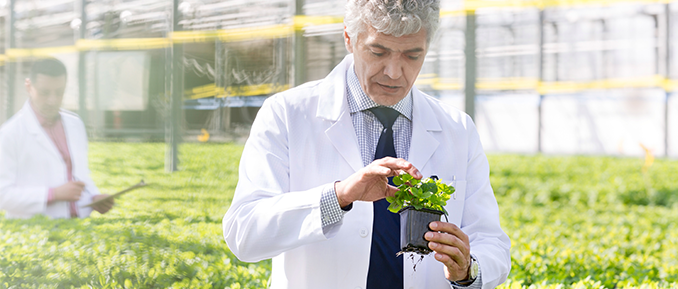
Plants are an integral part of our ecosystem, major contributors to everything from purifying air quality all the way through providing a critical source of food within the food chain. They are constantly subjected to every environmental stressor imaginable, from natural disasters through manmade pollution. Understanding their relative vulnerability and their potential stress tolerance sheds light on how secure they are within our ecosystems, as well as what we can potentially try to do to protect them.
Protecting plant genetic material is vital to ensuring survival and propagation. Not only must the sequence itself be protected, but also the genetic material’s access to replication; without this, organisms cannot repair themselves and respond to environmental changes—reducing their capacity for stress tolerance. Scientists at Tokyo University, led by Professor Sachihiro Matsunaga, sought to understand the epigenetic mechanisms at play to assist with repairing damaged DNA.
Arabidopsis is a common model organism used in biological research. It is related to the cabbage and mustard plants, though it is not directly used in agriculture. Thanks to this model plant, we know that vinegar may help epigenetically protect crops from perishing in droughts.
Professor Matsunaga and his team had previously identified RAD54 in Arabidopsis as a protein of interest in chromatin remodeling—specifically, in homologous recombination (HR). By the HR process, breaks in the genetic sequence—part of normal the “wear and tear” damage to which all cells are subjected—are corrected, maintaining genomic stability. However, HR requires that the chromatin binding DNA is altered so that the DNA is made “available” to these corrective processes; this is chromatin remodeling, and this was the Tokyo University team’s primary focus.
Professor Matsunaga and his team specifically wanted to further their understanding of how RAD54 is recruited and dissociated. This research team had already found that RAD54 tended to accumulate at sites of plant damage, and so they now wanted to understand why—what was the function of this protein accumulation?
The team isolated proteins from the plant specimen via both co-immunoprecipitation and mass spectrometry. This revealed some details on RAD54’s mechanism of action. RAD54 was found to interact with histone demethylase LDL1 at sites of DNA breakage or other damage.
LDL1 specifically demethylates the 4th lysine in H3 (H3K4me2), one of four histones found in chromatin, and as a result—depletion of LDL1 leads to an increase in RAD54 at sites with DNA damage. In ldl1 mutants deficient in LDL1, RAD54 accumulated in excess and blocked HR. This means that the LDL1-RAD54 interaction is essential to successful HR in plants like Arabidopsis.
Professor Matsunaga offers a fantastic summary of the importance of his research. “Unlike animals, plants are stationary and, therefore, more vulnerable to environmental stresses such as high temperatures, dryness, pathogens, parasites, and poor soil conditions,” he says.
Because they are stationary and cannot flee stressors, plants must be able to withstand damage and effectively repair themselves to maintain their health. Unfortunately, “… these stresses suppress the development and growth of plants by causing DNA damage. Therefore, an efficient DNA damage response is crucial to ensure optimum growth and survival of plants. Our study reveals one possible epigenetic regulation mechanism that can improve the DNA damage response in plants.”
Source: Takeshi Hirakawa et al. (2019) LSD1-LIKE1-Mediated H3K4me2 Demethylation Is Required for Homologous Recombination Repair. Plant Physiology.
Reference Tokyo Univ. of Science Scientists crack the code to improve stress tolerance in plants. Media Relations Tokyo Univ. of Science. 2 Aug. 2019. Web.

